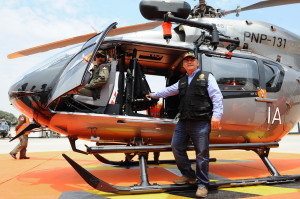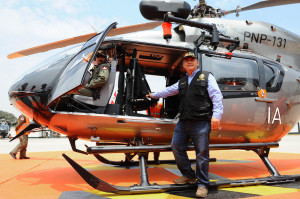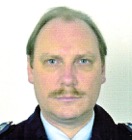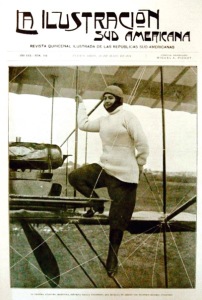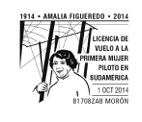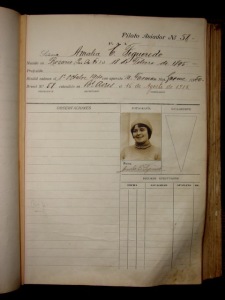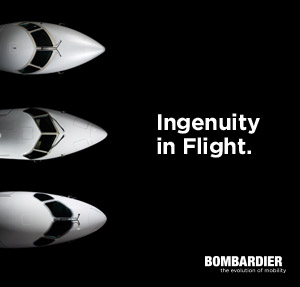Airbus Helicopters entrega el quinto EC145 a la Policía Nacional del Perú
November 14, 2014
Lima, 13 de Noviembre de 2014 – El Ministerio del Interior del Perú ha recibido el quinto y último helicóptero EC145, destinado a la modernización de la flota de la Policía Nacional. La entrega oficial de la aeronave se realizó en las instalaciones de la Dirección Nacional de la Aviación Policial en el Callao en presencia de autoridades peruanas y francesas, como el Ministro de Interior del Perú, Sr. Daniel Urresti y el General de las Fuerzas Aéreas de la Gendarmería Nacional Francesa, Sr. Daniel Leimbacher, así como de representantes de Airbus Helicopters.
En diciembre de 2012, La Policía Nacional del Perú eligió a Airbus Helicopters como socio en el proceso de renovación de su flota de helicópteros. El primer EC145 llegó a Lima en noviembre del 2013 y en menos de un año se han entregado los cinco helicópteros adquiridos por el gobierno peruano. Las cuatro aeronaves iniciales han acumulado en este tiempo más de 800 horas de vuelo en una gran variedad de misiones demostrando su polivalencia y eficacia operativa en todo el terreno peruano. Así, además de las operaciones de vigilancia y apoyo en misiones de seguridad ciudadana, la Policía Nacional del Perú ha encontrado en ellos un fiel y eficaz aliado en la lucha contra la minería ilegal en la región de Madre de Dios, en la frontera con Bolivia y Brasil. Asimismo, los helicópteros han participado con éxito en más de 20 misiones de rescate marítimo y evacuación aeromédica en Lima y Callao.
Con la adquisición de los nuevos EC145, la Policía Nacional del Perú se beneficia de un programa de transferencia de tecnología que ya ha conllevado la capacitación de más de 14 pilotos y 20 técnicos. Además, desde que en Octubre del 2013, los Ministros del Interior peruano y francés firmaran un acuerdo de cooperación en materia de seguridad y defensa, la Policía Nacional del Perú y la Gendarmeria Nacional francesa, operadores ambos del EC145, colaboran en un intercambio operacional para profundizar en el empleo táctico de estas aeronaves de última generación. En este marco, la PNP participó hace sólo unas semanas en un programa de rescate en alta montaña en los Alpes franceses.
Helicóptero de referencia en el segmento de los bimotores ligeros, el EC145 es uno de los helicópteros más reconocidos a nivel mundial para misiones de seguridad pública y apoyo a la población. Con más de 500 unidades entregadas hasta la fecha, esta aeronave es utilizada por las fuerzas policiales de 26 países, como Francia, donde la Gendarmerie Nationale tiene en servicio más de 15 helicópteros de este modelo. El éxito del EC145 abarca también el continente Americano, empezando por Estados Unidos, donde el gobierno decidió adquirir 345 unidades de este helicóptero para remplazar los UH-1H del Ejército. En América Latina, el EC145 participa en misiones policiales y de servicio público de varios países como Argentina, Bolivia y Brasil.
Potente y versátil, el EC145 de Airbus Helicopters se adapta perfectamente a las condiciones operativas del Perú ya que permite afrontar con éxito misiones en condiciones extremas tanto a nivel de mar, como en la selva o en el exigente Altiplano. Los EC145 de la Policía del Perú pueden transportar hasta 10 pasajeros, tienen una capacidad de carga de más de 1,7 toneladas y un alcance de 370 millas náuticas. Poseen también sistemas de altavoz, sirena y radios multi-frecuencia para interconexión radial y uno de ellos cuenta con una cámara infrarroja de última generación. Esta nueva cámara de alta definición, única en el país, permite la transmisión de imágenes en directo a la central del comando o a las fuerzas en tierra, optimizando las misiones de vigilancia y seguridad ciudadana.
Airbus Helicopters delivers the fifth EC145 to Peru’s National Police
November 14, 2014
Lima, November 13, 2014 – Peru’s Ministry of the Interior has now added the final EC145 helicopter to the modernized fleet of the National Police of Peru (PNP). The formal handover at the Police Aviation Unit facilities in El Callao was attended by both Peruvian and French officials, including Peru’s interior minister Daniel Urresti and Daniel Leimbacher, chief of the Central Air Command of the French Gendarmerie, along with representatives of Airbus Helicopters.
Five EC145s have been delivered in less than one year since the PNP first selected Airbus Helicopters as its partner to renew its helicopter fleet. The first four aircraft have already accumulated more than 800 flying hours in that time, performing a wide range of missions that demonstrate the EC145’s versatility and operational efficiency throughout Peru’s territory. In addition to surveillance operations and support for parapublic missions, the EC145 has proven itself to be a reliable and effective ally in the PNP’s fight against illegal mining in the Madre de Dios region on the border with Bolivia and Brazil. The helicopters have also successfully completed more than 20 sea rescue and MEDEVAC missions in Lima and Callao.
The deal for these new EC145s includes a technology transfer program that has already provided training for more than 14 pilots and 20 technicians of the PNP. In addition, the PNP and the French Gendarmerie – both operators of the EC145 – have been engaged in an operational exchange program to provide in-depth training on the tactical uses of these next-generation aircraft. This exchange is part of the cooperation agreement signed between the French and Peruvian interior ministries in the field of security and defense in October 2013. Just a few weeks ago, the PNP participated in high-mountain rescue exercises in the French Alps as part of this program.
The EC145 is the helicopter of choice in the light twin-engine category and is renowned worldwide for police and public service missions. With more than 500 units delivered to date, this helicopter serves in the police fleets of 26 countries – including France, where the Gendarmerie Nationale operates more than 15 units. The EC145 has also been a major success in the Americas, starting with the United States, where the government purchased 345 units to replace the Army’s UH-1Hs. In Latin America, the EC145 performs police and public service missions in a number of countries including Argentina, Bolivia and Brazil.
Powerful and versatile, the Airbus Helicopters EC145 is perfectly suited to the operating conditions in Peru, ensuring the success of missions in extreme conditions whether at sea level, in the jungle or up on the demanding Andean Plateau. With a payload capacity of more than 1.7 tons and a range of 370 nautical miles, the PNP’s new EC145s can transport up to 10 passengers. They are also equipped with PA systems, a siren and multi-frequency radios for hub-and-spoke communications. One of the helicopters features a state-of-the-art infrared camera. This new high-definition camera, the only one in the country, will transmit live images to the command center or ground units, which will optimize surveillance and civil security missions.
Bell Helicopter Announces New Regional Sales Manager in United States
November 13, 2014
Fort Worth, TX (November 13, 2014) – Bell Helicopter, a Textron Inc. company (NYSE: TXT), announced today a new addition to the North American team. Effective immediately, Ron Orndoff will assume the role of Regional Sales Manager in North America, responsible for overseeing marketing and sales activities within the Midwest region.
“Ron is an outstanding addition to our commercial sales team, and will excel in a new role supporting our current and future customers,” said Anthony Moreland, Bell Helicopter’s vice president of North American sales. “His experience supporting our global fleet allows him to provide a new perspective to our sales team and fully understand what is needed during the entire lifespan of each aircraft we sell.”
Orndoff brings over 30 years of aviation experience to Bell Helicopter’s North American team. Eight of those years were spent in Bell Helicopter’s Northeast U.S. region providing customer support and services as a Customer Service Engineer. He began his career in the U.S. Army Aviation branch, and is proud to have experience in both the military and commercial markets. This inspired a skill set that focuses on extensive technical and customer success oriented service.

Flying Colours Corp. adds GE Line Maintenance Center Authorisation for GE CF34-3 and CF34-8C Engines.
November 10, 2014
Flying Colours Corp., the North American MRO, completion and refurbishment specialist has added another approval to its growing list of authorisations. GE Aviation has named it as an authorized line maintenance center for GE’s CF34-3 and CF34-8C engines.
Under the terms of the authorization, which was given in mid-October, Flying Colours can perform line maintenance inspections in addition to routine installed engine maintenance, including full removal and replacement of engines as well as engine components. The authorization extends to cover work undertaken at both the Peterborough, Ontario facility and the St Louis, Missouri base.
“We are pleased to have been given this authorization as it enables us to work on the GE engines across the Challenger and CRJ families. We are proud to have this additional approval and believe it will enhance our customer experience,” said Eric Gillespie, Executive VIP Flying Colours.
Flying Colours Corp will also be able to provide GE’s tailored OnPointSM maintenance solution and support GE’s new engine warranty so expanding its overall offering for Challenger and CRJ customers.
Flying Colours will be exhibiting at this year’s MEBA show on booth 452
Centenario de la obtención de la licencia de vuelo de la primera mujer en Argentina y en América del Sur
November 7, 2014
�
�
�
�
Amalia Celia Figueredo fue la primera mujer en Argentina y en Sudamérica en recibirse de piloto de avión, el 1° de octubre de 1914. Recibió la licencia N° 58 del Aero Club Argentino. El Centenario de la efemérides fue celebrado con un emotivo acto en el Museo Nacional de Aeronáutica.
Nació en Rosario, Santa Fe, el 18 de febrero de 1895. Cuando su familia se mudó a Buenos Aires, comenzó a frecuentar el aeródromo de Villa Lugano, ubicado en cercanías de su domicilio. Allí conoció a Jorge Newbery, que concurría a su casa para pedir que enfríen botellas de agua en el aljibe “para los muchachos del Aero Club”, y tuvo la oportunidad de realizar un corto vuelo “de bautismo”, invitada por Newbery, acompañando a Pablo Castaibert. Las nuevas sensaciones que experimentó, la llevaron a interesarse en esa actividad que se consideraba privativa para los varones: comenzó sus prácticas de aviación con el piloto Pablo Castaibert, a bordo de un aeroplano Castaibert-Anzani, de 25 HP de potencia, con resultados adversos, pues en el avión no cabía el instructor, y por eso, en cada intento de carreteo rompía la aeronave.
�
Participó en dos vuelos muy interesantes: con el piloto Ricardo Detomassi, volaron desde Villa Lugano a San Fernando en un biplano Marichal, propiedad del señor González, utilizando 01:17 horas. Regresaron, en la misma aeronave, 17 días después, en 35 minutos solamente, pues tuvieron viento de cola. Luego, se presentó en la escuela Paillette, en San Fernando, que era dirigida por Enrique A. Roger, continuó su aprendizaje allí con el francés Marcel Paillette, logrando rendir su examen de vuelo definitivo, el 01 de octubre de 1914, a bordo de un biplano Farman. Con el Farman, que era un biplano mucho más grande, ya podía hacer prácticas con instructor a bordo, lo que permitió avanzar con su aprendizaje, y recibió su licencia de vuelo N° 58, emitida por el Aero Club Argentino. Para ese vuelo, fue fiscalizada por el ingeniero Irmscher y el señor Borcosque, que fueron designados comisarios por el Aero Club Argentino. Después de realizar algunos vuelos de demostración en su Rosario natal, con un accidente incluido, prometió a su novio que abandonaría la actividad aérea cuando se casaran. Efectivamente, se casaron el 13 de noviembre de 1915, y Amalia Celia Figueredo de Pietra dejó de volar.
Surf Air Takes Delivery of their First Pilatus PC-12 NG
November 7, 2014
The innovative all-you-can-fly private membership travel company begins expansion of its fleet to accommodate rapid subscriber growth.
In a ceremony held yesterday at Pilatus Business Aircraft Ltd’s facility in Broomfield, Colorado, Surf Air took delivery of PC-12 NG serial number 1490, with the registration number N809SA. The aircraft, sporting Surf Air’s unique new fleet paint scheme, is the first of fifteen firm aircraft the membership-based airline ordered from Pilatus earlier this year.
This newest aircraft joins a fleet of three “Legacy” PC-12s Surf Air employed initially to introduce their business model. Two additional new PC-12 NGs will join the fleet by the end of this year. As new aircraft come on line, the older Legacy PC-12s will eventually be phased out and replaced with PC-12 NGs featuring the Honeywell Primus Apex integrated avionics system, a higher horsepower Pratt & Whitney PT6A-67P engine, and customized BMW DesignworksUSA executive interiors.
The delivery of the first three new aircraft this year in Surf Air’s fleet will allow the company to expand its service to Carlsbad, California, beginning November 18 and Oakland, California, beginning December 15. Surf Air will take delivery of additional aircraft ordered in 2015 and 2016 before making a decision on exercising up to 50 additional options it has for future PC-12 NG delivery positions.
Surf Air’s innovative business model provides frequent regional business and leisure travelers with a sophisticated and hassle-free air travel experience that saves valuable time and money. The company operates Pilatus PC-12s in executive interior configuration to and from convenient airports in the San Francisco Bay Area, Los Angeles Metro Area, Santa Barbara and Truckee Lake Tahoe, with service to additional locations to follow.
�
IAI’s TaxiBot®, A SEMI-ROBOTIC PILOT CONTROLLED VEHICLE FOR DISPATCH TOWING, MAKES HISTORY
November 4, 2014
Taxibot® Background:
Airplanes were made to fly, not to taxi
IAI’s innovative TaxiBot® introduces a new concept for an alternative taxiing system for commercial airplanes. TaxiBot is a semi-robotic pilot controlled vehicle designed to transport airplanes from the airport gate to the runway and back, without using the airplane’s engines.
TaxiBot provides the required power to move the airplane and has achieved a world record of 23 knots taxiboting with fully loaded Boeing 737 and Airbus A320 airplanes, without the need to change or replace the airplane’s APU (auxiliary power unit).
�
TaxiBot can be used with either narrow or wide body airplanes, and does not increase the airplane’s weight or reduce its cargo space, as no modifications to the airplane’s systems are required. TaxiBot allows the pilot full control of the system, and operation is performed using the airplane’s tiller and brake pedals as in regular taxiing. Multiple patents were filed and granted worldwide for TaxiBot systems and concept.
Commercial airplane engines are very efficient in flight at high altitudes, but not when operated on the ground. During taxiing these engines burn considerable amounts of fuel, emit substantial amounts of CO2, are vulnerable to Foreign Object Damage (FOD) and create significant noise in airports and their surrounding areas.
The WB TaxiBot started dynamic testing at the New TLD factory in Sorigny, France, inaugurated on September 2014 for TaxiBot production. The WB TaxiBot will be suitable for all twin aisle airplanes; A330, A340, A350, A380, B747, B767, B777 and B787. The certification tests of the WB TaxiBot with a WB airplane is schedule for the third quarter of 2015 aiming to get STC for the first WB airplane type by the end of the year.
�
A typical Boeing 747 or Airbus 320 fuel consumption for a seventeen-minute taxi before takeoff is approximately one ton of fuel (1,250 liters). TaxiBot operation will reduce it by eighty-five percent. In comparison, for the same taxiing procedure, TaxiBot itself consumes only twenty-five to thirty liters of fuel. The same B747 or Airbus 320 airplane’s engines emit 3.2 tons of CO2, while TaxiBot emits less than sixty kgs. This will result in savings of millions of dollars a year for airline operators and billions of dollars a year for the commercial airline industry.
�
Overall worldwide taxiing costs in 2020 are estimated at over $8.4B per year. Taxiing using TaxiBot has the potential to reduce these costs to less than $3B per year.
�
Substantial reduction in CO2 emissions is achieved by using TaxiBot, regardless of the flight range. The system reduces cases of FOD by fifty percent. In addition, recent tests in Frankfurt have shown that taxiing with TaxiBot reduced the noise level by fifty percent, compared to normal taxiing with jet engines. Moreover, the noise level is reduced to below eighty db. which is considered to be safe for humans.
TaxiBot provides an economic and effective solution to the current taxiing methods by using hybrid diesel electric power instead of hydrostatic drive; this results in optimal efficiency, maintainability and avoidance of hydraulic leaks on airports’ tarmacs.
�
328 Support Services GmbH announces a major upgrade of Dornier 328 avionics system.
November 4, 2014
328 Support Services GmbH, the Type Certificate holder for the D328 Jet and turboprop aircraft, is pleased to announce the commencement of a major cockpit upgrade programme for the aircraft. The programme, which has just commenced, is expected to be certified by EASA and the US FAA by late 2016.
In partnership with the current avionics system provider and a number of strategic customers, the existing flight deck will be enhanced with features that will include:
• Compliance with ADS-B out requirements.
• New Primus Elite LCD displays that save weight and provide enhanced features such as charts and maps, enhanced vision, video display capabilities and synthetic vision, which will be available as an option.
• A second FMS option will be available for the first time on the D328 turboprop aircraft allowing WAAS-LPV and remote and oceanic operations.
• The capability to provide PM-CPDLC communications with ground based stations.
• Smart Runway and Smart Landing upgrade capability
• A Class 3 Electronic flight bag.
Dave Jackson, Managing Director of 328 Group, commented: “This upgrade programme, which will be overseen by our engineering team in Oberphaffenhofen, Germany, will ensure that the D328 aircraft has the opportunity to operate in all areas of the world in compliance with all known regulatory requirements for many years to come.”
LAN CARGO launches first cargo operations between Switzerland and Latin America
October 31, 2014
· Launched on Monday 27 October, this is the first cargo operation from the city of Basel to South America
· The route will operate once a week on a Boeing 777F, the company’s largest cargo aircraft
Thursday 30 October 2014 – Last Monday, 27 October, LAN CARGO, the cargo division of LATAM Airlines Group, inaugurated its first and only cargo operation between the city of Basel in Switzerland and South America. The principal objective will be to increase the cargo transport offering from the region, primarily for the pharmaceutical sector.
The flight departed at 7pm towards Guarulhos International Airport, located in Sao Paulo, Brazil, carrying 82 tons of cargo. The flight concluded at 7am on Tuesday 28 October when it touched down in Santiago de Chile.
The cargo operation will fly every Monday on a Boeing 777F aircraft and its itinerary will be Amsterdam – Basel – Guarulhos (Sao Paulo) – Buenos Aires – Santiago de Chile. The next flight will depart on Monday 3 November and is already being programmed by the LAN CARGO team in Europe. While the main aim of the flight is to assist with the transport of pharmaceutical products, the company also hopes to use the route to transport cargo from the south of Germany and southeast France.
Guido Henke, director of LAN CARGO in Europe, commented “This new direct cargo service to Latin America allows export industries across the region to minimise road feeder service to the different European hubs, saving both time and the need for trucks, as well as minimising risk – a crucial aspect for transporting the high value cargo which is exported from this region.”
The flight will be operated from Basel-Mulhouse-Freiburg airport, located on the border between Germany, Switzerland and France. This strategic location opens the possibilities to tap into the transportation of cargo from all three countries. In addition to this, the areas covered also extend to northern Italy and Austria, countries that will benefit from the option to cut down their previously used road feeder service routes and send products by air.
One of LAN CARGO’s principal focuses for Europe is to diversify its locations and incorporate new points of collection into its network, opening up a direct service to South America. Several years ago, LAN CARGO incorporated Germany as cargo operation followed by Amsterdam, which captured cargo from the Netherlands, Benelux, UK and the Nordics. Now, via the incorporation of Basel, LAN CARGO reaches a city that not only plays an important part in the pharmaceutical industry, but also watchmaking and fashion, among other products.
The region will also benefit from the possibility of receiving cargo imports directly from Latin America, most of which will be perishable, without the need for road feeder service.
The cargo division of LATAM Airlines Group transports cargo in all of its passenger planes. Currently, this includes daily flights operated by TAM Airlines from Milan, Paris, Frankfurt, Madrid and London, as well as those operated by LAN Airlines from Madrid and Frankfurt. These services are complemented by the six weekly cargo services operated by the Boeing 777F from Frankfurt and Amsterdam. One of the Amsterdam services is the one that the new Basel stopovers will be incorporated to from Monday.
The SSJ100: Super Optimized Aircraft in the 100-seat market
October 31, 2014
Venice (Italy) – October 31, 2014
Following the agreement (Letter of Intent) signed between the leasing Company “Ilyushin Finance Corporation” (IFC) and the Belgian carrier VLM Airline – for two Sukhoi Superjet 100 with options for additional two plus ten aircraft – SuperJet International is pleased to see the confirmation of the outstanding suitability and the exceptional efficiency of the SSJ100 aircraft in the European market.
Even though it entered into service a few years ago in mid-2011, the SSJ100 has already confirmed its maturity and reliability during operations. The SSJ100 fleet in service worldwide logged more than 60.000 flight hours with the Interjet SSJ100’s maximum utilization in a day of over 11 flight hours. In the first year of operations, the Interjet SSJ100 hasn’t logged any cancellations and achieved a technical dispatch reliability’s average of 99,5%.
“The LoI signed by VLM represents an interesting achievement in a very competitive market like Europe – states Nazario Cauceglia, CEO of SuperJet International – This confirms that the SSJ100 is the best choice, what exactly the regional market needs today. It is certainly the most optimized aircraft in the 100-seat market in terms of total operational costs and of ownership costs compared to its direct competitors”.
Today the new-generation SSJ100 is aimed at achieving a significant share in the 100-seat market segment, providing a spacious cabin and a high comfort, a state-of-the-art technology with a new advanced engine, flexibility in the short-to-medium range, efficiency and superior performance. But along with a proven and reliable product, SuperJet International is also offering competitive financial solutions.
“This important transaction – adds Nazario Cauceglia – is also the result of an attractive financial offer. We are pleased to provide our customers with exceptional financial packages that can be converted into operating lease-agreements. Financing is a key aspect and I am sure – says Cauceglia – this approach will pave the way of the SSJ100 towards the success”.
The Sukhoi Superjet 100 program is a cooperation between the Russian Sukhoi Holding and the Italian Finmeccanica-Alenia Aermacchi. Sukhoi Civil Aircraft Company (SCAC), in Russia, is responsible for the design and production of the aircraft while SuperJet International (SJI), in Italy, is responsible for Customer Support worldwide. The marketing and sales of the aircraft are jointly conducted by SCAC and SJI worldwide.
<

